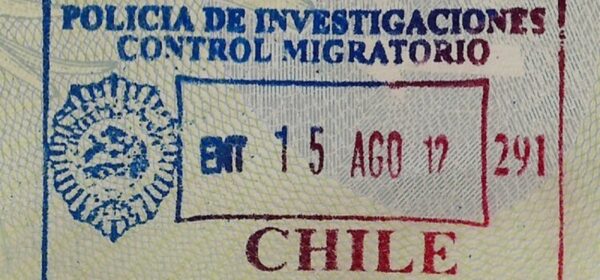The United States of America has the strongest economy in the world and is a dream destination for many foreigners. Almost every foreigner wants a chance to stay in the North American country, and those who have gotten in strive to preserve their residence. Foreigners who want to stay in the US indefinitely must obtain a Permanent Residence Card (popularly called Green Card) from the U.S. Citizenship and Immigration Services (USCIS). We will outline some easy ways to get permanent residency in USA, highlighting their perks and eligibility requirements. Let's get started.
Advantages of Getting A Green Card in The US
Aside from the freedom to stay indefinitely in the US, Green Card holders enjoy many additional benefits. Some significant benefits include.
1. Green Card holders get access to public education and government-sponsored Social Benefits like Social Security and Medicare. Also, you can study at any level of education and field.
2. You can work freely in any industry as a Green Card holder. You are no longer bound by Immigration-based employment requirements associated with the different types of work visas.
3. You can sponsor family members to apply for their own Green Cards like a US citizen.
4. As a Green Card holder, you can begin your path to citizenship by naturalization. You must have stayed in the US for at least five years to be eligible for this, and other important requirements apply.
5. The Green Card allows you to travel in and out of the country without requiring a visa. However, extended periods of travel may affect your eligibility for naturalization.
Easy Ways to Get Permanent Residency in USA
Many foreign nationals are looking for the easiest ways to get permanent residency in USA due to its many appealing merits. In most cases, you must first get a temporary visa with a residence permit. This visa allows you to live temporarily in the US before applying for a Green Card.
There are many ways to get a non-immigrant visa, each with unique eligibility requirements, perks, and limitations. Similarly, these visas have different means of upgrading them to a Green Card. We have reviewed top legal channels, outlining their subcategories and perks. Check them out below:
1. Employment-based Green Card
Employment sponsorship is arguably the easiest way to get permanent residency in USA. It is especially faster for people with specialized skills, advanced degrees, or exceptional abilities. The US Department of Labor allows employers (US-based businesses) to hire foreigners in specialty occupations with insufficient qualified US workers. When you get a job in this category, you can apply for a work visa that fits your employment conditions.
Although the process is fast, it requires lots of documentation from applicants and their sponsoring employers. The five categories of employment-based Green Cards are as follows:
A. First Preference (EB-1)
This type of visa is for Priority workers with exceptional skills in their field. Globally recognized artists, award-winning scientists, and top executives of multinational companies fall under this category.
B. Second Preference (EB-2)
The EB-2 is for Professionals with advanced degrees or persons of exceptional ability. It is popular among nurses and physiotherapists. Furthermore, the process is usually faster for people working on research projects related to the Department of Defense.
C. Third Preference (EB-3)
Foreign nationals whose proposed US employment requires at least a Bachelor's degree-level education in specialized fields are eligible for this visa. Some unskilled workers may also benefit from this platform but will have to wait longer.
D. Fourth Preference (EB-4)
Fourth Preference employment-based visas are for special immigrants. This includes certain religious workers and juveniles who need to join foster families in the United States. The nature of this category is ‘special’, and the same applies to the eligibility requirements.
E. Fifth Preference (EB-5)
Many people call this category the Job Creation Visa. It is for foreign nationals who have the means to invest large sums in a US venture that creates full-time jobs for at least IS citizens or permanent residents. Also, the US immigration board carefully scrutinizes petitions under this category to avoid fraudulent applications.
The First, Second, or Third Preference categories require employer sponsorship, among other underlying requirements. Also, many employers are reluctant to take chances on someone they don't know very well. So, you can gain their trust by working with a temporary visa before applying for an upgrade. Work visas like the H-1B allow you to work within a particular organization or field of work for at least one year. You will need a labor certificate from your employer to upgrade to a Green Card.
2. Family-based Green Card
You have to be a US citizen's direct relative to qualify for family sponsorship. The US citizen must be older than 21 and will be required to provide evidence of the relationship and other important documents. This type of visa is for family reunification and has a quick processing time. Furthermore, immediate relatives like spouses, children under 21 years of age, and parents don't have to wait for visa eligibility. Moreover, some relatives that are categorized under Family-Sponsored Preferences may have to wait.
A. First Preference (F1)
This category is for Unmarried sons and daughters of US citizens over age 21.
B. Second Preference (F2)
This group comprises Spouses and children of permanent residents (category 2A) and unmarried sons and daughters aged at least 21 years of permanent residents (category 2B).
C. Third Preference (F3)
Married sons and daughters of US citizens apply via this method.
D. Fourth Preference (F4)
The F4 category is for siblings of US adult citizens.
The Family-sponsorship channel does not accommodate extended families like grandparents and cousins. Also, the waiting time depends on the number of applications that came in before yours in the same category. So, in most cases, there is little or no wait.
3. Diversity/Lottery Green Card
The Diversity Visa, popularly called the Green Card Lottery, is a method of immigration that applies to foreign nationals from underrepresented countries like Estonia, Fiji, Algeria, Lebanon, and Slovakia who want to come to the United States. Every year, US immigration law allows 55,000 immigrant visas for applicants from countries with fewer permanent residence applications.
Applicants must meet the minimum educational requirements and prove they can financially support themselves in the United States. Also, people with past criminal activities or immigration problems are inadmissible for the program. The State Department randomly selects applicants from a pool, and winners are assigned immigrant visa numbers immediately.
Additionally, applicant spouses and immediate family members can get a Green Card through this process. The only drawback is that you will still need to undergo the processing before the visas run out for the year.
4. Student Visa to Green Card
This method involves getting a non-immigrant student visa to study at a US university for a bachelor's or master's degree. It entitles you to a one-year post-graduate work permit called Optional Practical Training. After one year, your employer can sponsor you to apply for an H1B work visa.
Afterward, they apply for labor certification from the Department of Labor with proof that no US citizens or immigrants are deprived of the job. This certificate allows you to apply for a green card. This method is lengthy but adequate for people with skills but little money to invest, and no US-based family member sponsors them.
How to Apply For a Green Card
The green card application process differs for people within and outside the United States. Most of the application processes are similar but require different types of documentation. Applicants already in the US apply with a Form I-485 (Application to Adjust Status). This form is a petition to upgrade their nonimmigrant visa. It also applies to winners of the diversity visa and direct family members of US citizens. Meanwhile, applicants from outside the country apply using Form DS-260 (Immigrant Visa Electronic Application). This form is for foreigners seeking an immigrant visa via any channels highlighted above.
The common steps all applicants must take are:
1. Filing the petition: Usually, a US citizen must file an immigrant petition for you (often referred to as sponsor) whether or not you're in the country. In rare cases, you may be eligible to file for yourself.
2. After USCIS approves the immigrant petition and a visa is available in your category, you file a Green Card application with USCIS.
3. You attend a biometrics appointment to provide fingerprints, photos, and a signature.
4. You go to an immigration interview.
5. You wait while the board makes a decision on your application.
How Much Does a Green Card Cost?
Applying for a Green Card is not for free. Applicants must pay an application fee, a medical exam fee, and other required fees. The categories attract different application fees based on applicant qualification and country of origin.
For instance, the official filing fee for a family-based green card is $3,005 for applicants applying from within the United States and $1,340 for applicants outside the US. Other visa categories accrue a similar range of application fees. Furthermore, the medical examination fee varies by provider.
Conclusion
To sum it all up, every legal means of getting permanent residency in USA has its unique requirements. Also, the US immigration law places annual caps on all Green Card programs, determining the time taken to make application decisions. So, confirming eligibility and providing all required documents is important to increase your chances of success. Additionally, applying for a non-immigrant visa and then upgrading to a Green Card is the most effective channel.
















